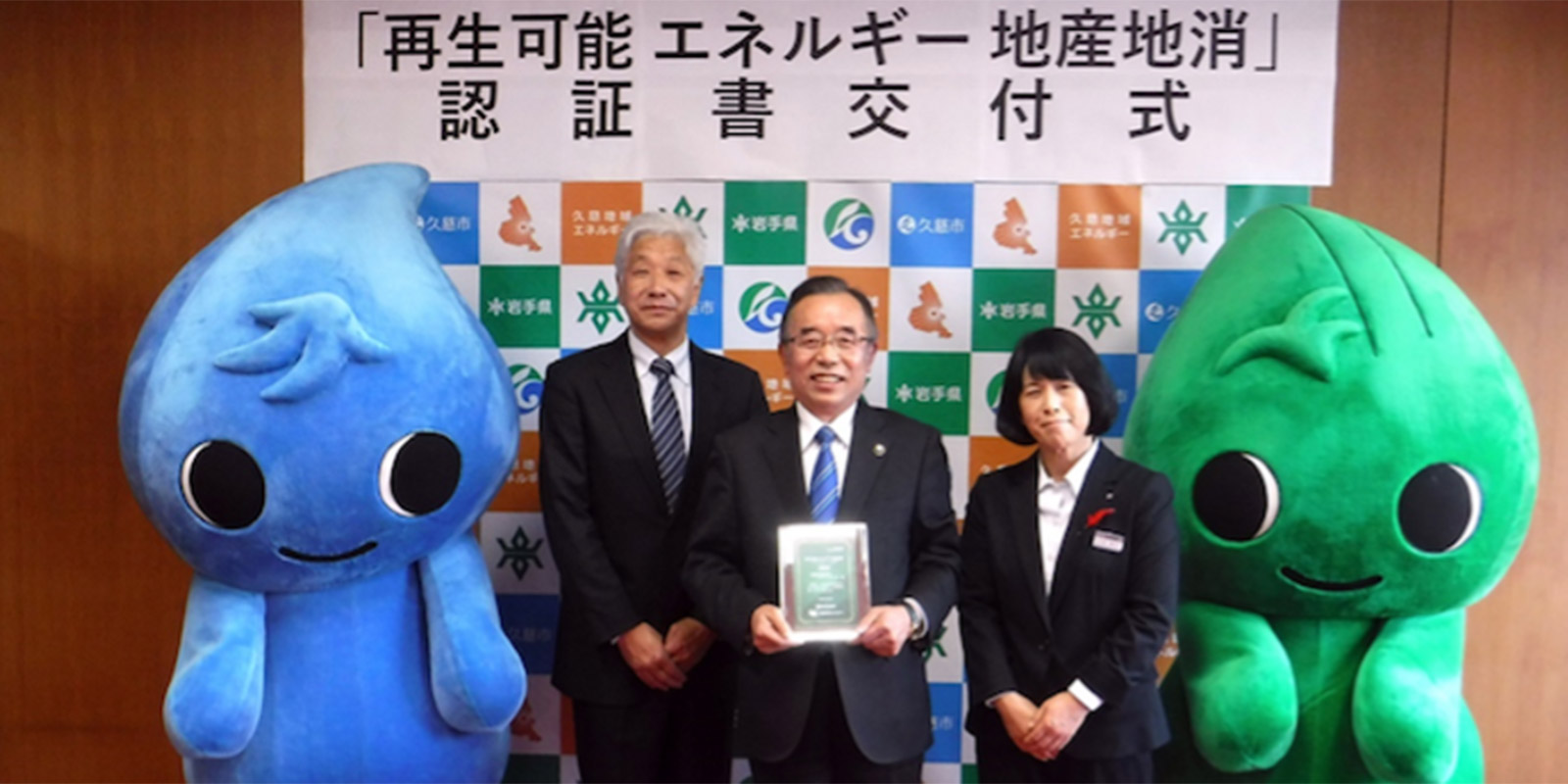A power for good
The idea seems simple—local energy for local consumption. Kazuya Kitamura discovers how the production of renewables is revitalizing the city of Kuji
To many, the small city of Kuji, located on the coast of Iwate Prefecture, is best known as the setting for Amachan, a phenomenally popular TV drama first screened nearly a decade ago. It followed the story of Aki Amano, a high school student from Tokyo who moves to the city and ends up becoming a pop star. The show was credited with boosting tourism and bringing economic benefits to Kuji, a city of just 30,000, which had suffered damage from the tsunami caused by the 2011 Great East Japan Earthquake.
Now Kuji is back in the spotlight with a new energy initiative that could also have a lasting impact. Locally produced energy, consumed locally, is being eyed as a way to promote renewables, contributing not only to decarbonization but to the recovery of the local economy, as utility expenses and other costs will be paid to local businesses. At the heart of these efforts is Kuji Regional Energy, established in 2018 to produce power from renewable sources in the city.
Locally produced energy, consumed locally, is being eyed as a way to promote renewables, contributing not only to decarbonization but to the recovery of the local economy
 Kuji Regional Energy CEO Haruo Wakabayashi (left) receives a certificate for the local production and consumption of renewable energy from the mayor of Kuji city, Joji Endo (center) | Courtesy of Kuji Regional Energy Co Ltd
Kuji Regional Energy CEO Haruo Wakabayashi (left) receives a certificate for the local production and consumption of renewable energy from the mayor of Kuji city, Joji Endo (center) | Courtesy of Kuji Regional Energy Co Ltd
The enterprise is jointly financed by the city of Kuji and several private companies headquartered in the municipality, led by the local construction firm Miyagi Kensetsu. Among the roughly 70 power companies in Japan set up by municipalities, Kuji Regional Energy is one of the few to be entirely owned and managed by local stakeholders.
“We want to do something to stop the decline. We’re not thinking about profit”
Power to the people
Concern for the local community was the driving force behind the company’s founding. The population of Kuji was already in decline before the 2011 disaster, and the local government has been struggling to prevent the outflow of talent and money since. “We want to do something to stop the decline,” says Haruo Wakabayashi, CEO of Kuji Regional Energy. “We’re not thinking about profit.”
“We want to do something to stop the decline. We’re not thinking about profit”
Kuji Regional Energy sells electricity to public facilities, private companies and households within the city. While expanding its customer base, the company is seeking to procure power from more renewable energy plants in the region. In one high-profile effort, it has teamed up with the Iwate Prefectural Enterprise Bureau, which operates one of the country’s largest hydroelectric power plants, to procure electricity from the Taki Dam in Kuji. Electricity generated from the dam is currently used to power cultural facilities such as the city’s Amber Hall.
 The NHK drama Amachan brought Kuji to a wider audience | NHK
The NHK drama Amachan brought Kuji to a wider audience | NHK
The company is also developing new renewable energy sources—including photovoltaic power stations, which convert light into electricity—by collaborating with the Bank of Iwate. Despite the fact that rising electricity costs are putting a squeeze on the business, Kuji Regional Energy donates a part of its profits to the city to help support its citizens with issues such as childcare.
City officials hope that decarbonization will help entice those who have left Kuji to return
Another key contributor to Kuji’s decarbonization efforts is the Kuji Biomass Energy Corporation, one of the largest renewable heat suppliers in Japan, which combines the supply of heat with mushroom farming. Working closely with Kuji Regional Energy, the company uses locally discarded bark as fuel, cultivating shiitake mushrooms in 60 large greenhouses, and supplies woodchips dried using surplus heat to several biomass facilities in the local area.
City officials hope that decarbonization will help entice those who have left Kuji to return
City officials hope that decarbonization will help entice those who have left Kuji to return. The city has signed up to the Renewable Energy 100 Declaration RE Action, a Japanese offshoot of the global RE100 initiative, aimed at getting municipalities and small and medium-sized enterprises to start working towards a carbon-neutral world. It’s also committed to reducing its net emissions to zero by 2050, in line with the goal of the Japanese government.
The establishment of a new municipal power company in Kuji, and its plans to create a virtuous economic cycle with clean local energy at the forefront, is perhaps something that other cities should take note of. A decade after Amachan put Kuji on the map, the city now has further reason to be proud.